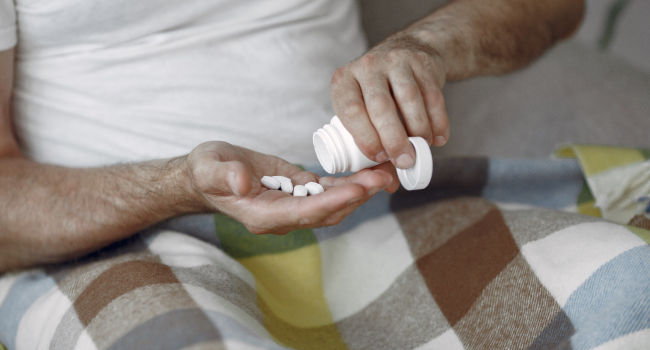Their inclusion does not guarantee they will be prescribed to any individual, as treatment decisions are ultimately at the discretion of healthcare providers. Healthcare providers may prescribe other medications or recommend non-pharmacological treatment based on the patient’s unique health circumstances and needs. Read more
Highlights
- Clonidine ER is a non-stimulant that can help ADHD symptoms like hyperactivity, impulsivity, irritability, and sleep issues. It’s only FDA-approved for children and teens, but some adults find it helpful.
- Before starting clonidine, tell your healthcare provider about heart history and all medicines you are taking. Discuss the dosing, titration, monitoring, missed doses, and which side effects need urgent care.
- Do not stop clonidine suddenly. Plan follow-ups and ask for treatment adjustments if you think the benefit from clonidine is limited in your case.
While stimulant medications are typically the first choice (and most effective medication) for attention deficit hyperactivity disorder (ADHD), not everyone can or wants to take them. Clonidine, also known by the brand name Kapvay, is a non-stimulant medication used as a second-line treatment for ADHD.
If stimulants don’t work for you, then clonidine might be a good option to explore. In this article, we go over how clonidine works for ADHD, how effective it is, and the side effects to be aware of. Here are all the details you need to know.
What Is Clonidine?
Clonidine belongs to a group of medications known as alpha-adrenergic agonists. These medications increase blood flow by relaxing the blood vessels. Originally, the U.S. Food and Drug Administration (FDA) approved clonidine (sold under the name Catapres) to treat high blood pressure in the 1970s.
The extended-release form of clonidine, sold under the brand name Kapvay, was approved to treat ADHD in 2010. The
- Anxiety
- Panic attacks
- Managing withdrawal symptoms from opioids, alcohol, and benzodiazepines
- Tourette’s syndrome and tics
- Severe cancer pain
The immediate-release form of clonidine (Catapres) is also sometimes used off-label for ADHD, but it isn’t approved for it.
How Does Clonidine Work for ADHD?
Clonidine works for ADHD
Clonidine for ADHD can be used both alone as well as together with stimulant ADHD medications. It’s also best used alongside other ADHD treatments, including behavioral strategies.

Effectiveness of Clonidine for ADHD
Research has found that clonidine can be effective for ADHD in children and adolescents. The FDA determined that enough clinical trials (high-level research) have been conducted on clonidine to be able to confidently say that it works for children and teens with ADHD. Clinical trials have found that
In general, clonidine does not have as much research supporting its effectiveness as stimulant medications or non-stimulant options like atomoxetine. And the FDA hasn’t determined that it’s effective enough to approve it for adults at all. It can be helpful, especially together with stimulants or for those who cannot take stimulant medication, but it’s not the first choice for everyone.
Reasons why you might be prescribed clonidine instead of stimulants include:
- You can’t tolerate the side effects of stimulants.
- You’ve tried stimulants and they haven’t worked for you.
- You have a history of substance use disorder and want to avoid the risk of addiction that can come with stimulants.
- You have high blood pressure and need to avoid the cardiovascular effects of stimulants.
- You have co-occurring conditions (like tics or anxiety) that may also be helped by clonidine.
How Long Does Clonidine Take to Work?
Unlike stimulants, clonidine typically takes longer to start being effective. Your ADHD symptoms
Forms and Dosage for ADHD
Clonidine, when used for ADHD, is taken in an extended-release form (sold under the brand name Kapvay).
Usually, the starting dose of Kapvay is 0.1 mg, taken once daily at bedtime. Depending on how you feel, your provider may raise your dose slowly to reach a dose that works for you. The maximum dosage of clonidine for adult ADHD is 0.4 mg/day. The safety of higher doses of Kapvay hasn’t been studied and could be dangerous.
Benefits of Clonidine for ADHD
Again, clonidine isn’t typically favored over other approved ADHD medications. But it can have some benefits, including the following:
- Contrary to stimulant medications used to treat ADHD, clonidine ER has very little to no addiction potential. That means it’s safe even for people with a history of substance use disorder. Keep in mind, however, that the risk of addiction remains low for stimulants as well if they are taken as prescribed.
- Clonidine is not a controlled substance, so there may be fewer restrictions (such as when traveling with it).
- It can be used alone or with other ADHD medications and increase or prolong the benefits of stimulants.
- Some people find that they experience fewer side effects compared to stimulants. Other times, clonidine’s side effects (like drowsiness) can counteract some of the side effects of other ADHD medications.
- Although it’s not the most effective ADHD medication, it can be helpful, especially for children and teens.
Potential Drawbacks and Side Effects
Although clonidine can sometimes be a good alternative for people who don’t respond to stimulants, it has drawbacks as well:
- It could make you feel drowsy and sedated, which is the most common side effect.
- Although it doesn’t tend to cause addiction, it can cause some physical dependence. Sudden discontinuation may result in withdrawal symptoms such as sudden uncontrolled blood pressure known as rebound hypertension.
- The safety of using clonidine long-term needs to be studied further, especially because of its risk of causing hypotension (low blood pressure).
- It takes several weeks to start working. In comparison, stimulants typically start having an effect soon after taking the first dose.
- Compared to other non-stimulants like guanfacine, the effects of clonidine
may not last as long[6] . - It’s only approved for children and teens aged 6 to 17. It may be less helpful for adults with ADHD, although some find it effective.
Even when clonidine is working, it can have side effects — just like most medications.
- Sleepiness and fatigue
- Irritability
- Trouble sleeping
- Nightmares
- Constipation
- Dry mouth
- Decreased appetite
- Dizziness
Some rarer, but more serious, potential side effects of Kapvay are:
- Low blood pressure or bradycardia (abnormally low heart rate)
- Sedation
- Allergic reactions
- Other heart problems, including sinus node dysfunction and AV block.

Important Considerations and Precautions
You might not be a good candidate for clonidine if:
- You have a history of low blood pressure or low heart rate.
- You are taking other medications that cause sedation or sleepiness.
- You have had an allergic reaction to clonidine in the past.
- You have or are at risk for chronic kidney failure.
- You’re chronically dehydrated.
- You have a history of passing out or fainting.
- You have any heart problems, including high blood pressure or heart attacks.
- You have had a stroke.
- You are pregnant or planning to become pregnant.
You should never stop taking clonidine suddenly without direct instructions from a medical professional. Stopping clonidine suddenly can lead to what’s known as rebound hypertension, which is when your blood pressure shoots up.
Also, never take more than your prescribed dose of clonidine. Signs of overdose include low blood pressure, slowed breathing, weakness, hypothermia, absent reflexes, and weakness. Large overdoses could result in seizures or coma. Seek medical advice if you took more clonidine than necessary.
Tell your healthcare provider about all other medications and supplements you’re taking, especially:
- Antidepressants
- Other clonidine medications (like Catapres)
- Blood pressure medication
- Other medications that make you sleepy, like beta-blockers
These medications could interact with clonidine in potentially harmful ways.
Talking to Your Healthcare Provider: What to Expect
Before you start clonidine ER (Kapvay), tell your healthcare provider about your full medical history and every medicine or supplement you take — especially all the things we’ve mentioned above.
Ask whether clonidine fits your goals (for example, improving sleep or reducing irritability and hyperactivity) and how it might work alone or with a stimulant. Clarify the starting dose, the plan for titration (increasing your dose over time), and whether you need baseline medical checks like blood pressure, heart rate, or an ECG if you have conduction problems.
Ask what to expect in the first two weeks. It can be helpful to be aware of common effects like sleepiness or lightheadedness, which side effects are urgent, and when to get medical help. Get clear instructions on timing doses (night vs split dosing), what to do if you feel too drowsy at school or work, how to handle a missed dose, and what your next steps are if you consider stopping clonidine. Confirm whether you have to monitor blood pressure and pulse at home, and ask about alcohol, antihistamines, or other medicines that can add to sedation.
Plan follow-up visits to review whether clonidine is meeting your goals, and whether the side effects are too uncomfortable to continue. Ask when to consider dose changes, adding a stimulant, or trying an alternative like guanfacine XR or atomoxetine.
If you ever need to stop, request a taper schedule in advance so you come off safely. Never stop taking Kapvay before talking to your healthcare provider first because they will tell you how to do it correctly.
Takeaway
Despite not being the first choice, clonidine for ADHD may be beneficial for some people. It can be prescribed alone or together with other ADHD medications, including stimulants or non-stimulants. The important thing to understand is that even if stimulants haven’t been effective for you, you have options.
To know if clonidine, or another medication, is the best ADHD treatment for you, consult with a licensed healthcare provider at MEDvidi. After conducting a detailed symptoms check and making a diagnosis, they will develop a personalized treatment plan for you to help you manage your ADHD symptoms.
Frequently Asked Questions
Is clonidine a stimulant?
How long does it take for clonidine to kick in for ADHD?
Can clonidine improve focus?
Does clonidine make people with ADHD sleepy?
Yes, drowsiness is one of the most commonly reported side effects of clonidine. Not everyone will get sleepy — trials have found that sleepiness affects around
Should clonidine be taken at night or morning for ADHD?
Because clonidine can make you sleepy, many people take it at night. If a healthcare provider recommends it, it’s also possible to take one dose in the morning and the other at night. Always follow your healthcare provider’s instructions.













